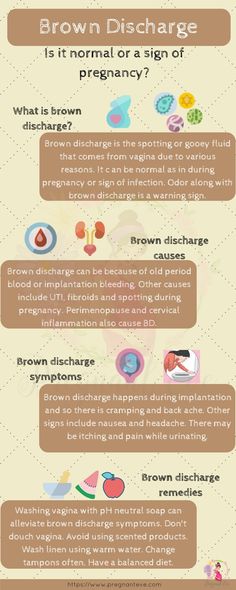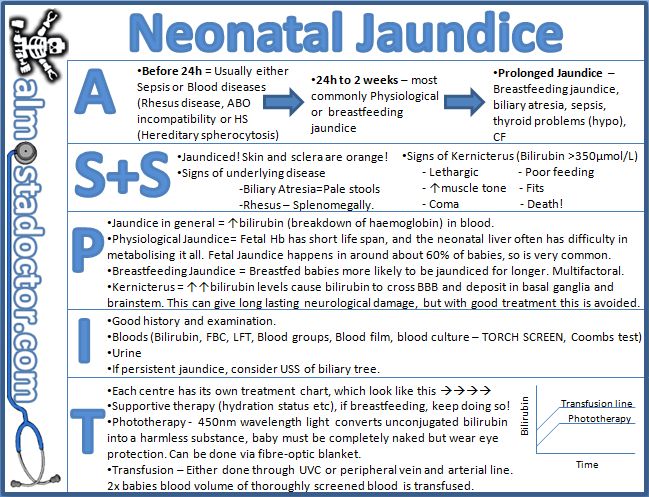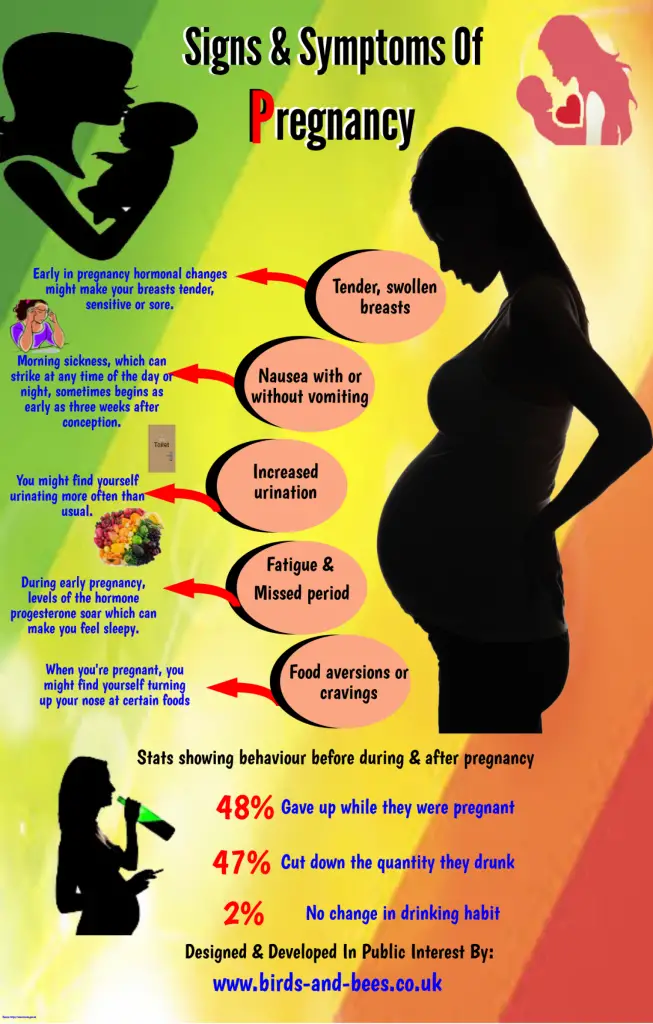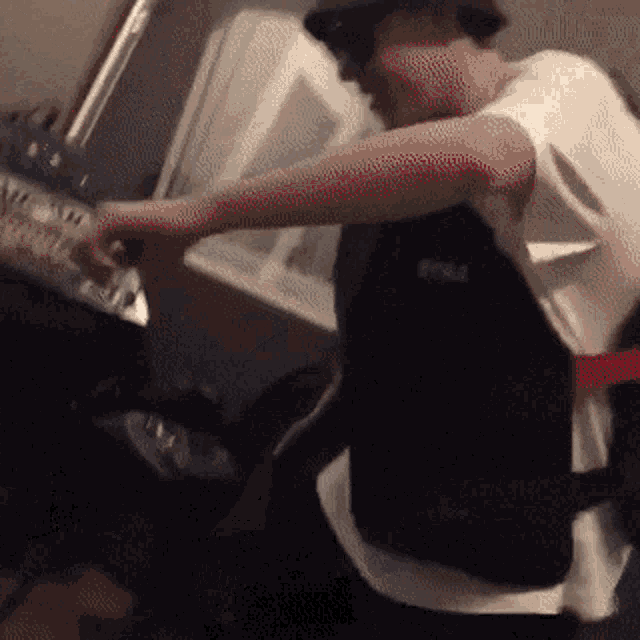Can you feel braxton hicks in your back
How to Tell the Difference?
What are Braxton Hicks contractions?
Braxton Hicks contractions, also known as false contractions, are the sensations your uterus produces in order to prepare for the labor. Your doctor will most likely inform you of Braxton Hicks and let you know to not concern over it.
Still, women who are at risk of premature labor, and women with other health risk factors affecting the pregnancy often worry about being unable to distinguish real contractions from Braxton Hicks.
You can picture Braxton Hicks contractions as a way for your uterus to get in shape, to exercise, in order to prepare for childbirth.
Unlike real contractions, Braxton Hicks are weaker and last up to 30 seconds.
Typically, Braxton Hicks are the localized contractions of the sides of the uterus, rather than the front. However, as the belly already feels tight, it might be hard for you to distinguish whether your belly is tightening from the top downwards, or only on the sides.
Take a quiz
Find out what you can do with our Health Assistant
Braxton Hicks contractions can be repetitive but are not rhythmic, they do not get stronger. They appear randomly, or sporadically.
Most women get used to having Braxton Hicks in certain times of the day or in certain situations. For most women, the false contractions intensify when they're more active or get tired. Long sitting can also intensify Braxton Hicks, and they're frequent in late evenings.
Since every woman has a different level of sensitivity to contractions and other sensations that occur inside the belly (gas, bloating, under-rib pains and stretching), Braxton Hicks will feel differently.
In general, you'll feel false contractions as a type of painless, numb pressure in your upper abdomen. If you're sensitive enough to distinguish that the cramping is happening at the sides of the uterus, good for you! If not, don't get alarmed. There are still plenty of ways and strategies for you to distinguish false from real contractions.
What are real labor contractions?
A real contraction, on its own, happens when a uterus cramps from its top, creating a pressure on the cervix.
This causes the cervix to shorten and then, and eventually start to dilate. When it comes to a timely, full-term labor, most women prefer for the process to go as fast as possible.
However, if there's a risk from premature labor, you should learn more about real contraction to be able to recognize them. Here are some of the real contraction characteristics:
Pain
Real contractions are painful, but the intensity of pain varies among women.
Low-pelvic pressure
False contractions normally don't cause the pressuring feeling in the low abdomen and pelvic area. However, if you start feeling like there's something pressuring your pelvis from the inside out, it's possible that the contractions are real.
Rhythmic repetition
More frequent than 5 or 6 per hour. Real contractions most often repeat every 9-11 minutes and get progressively closer (every 8 and five minutes) with time.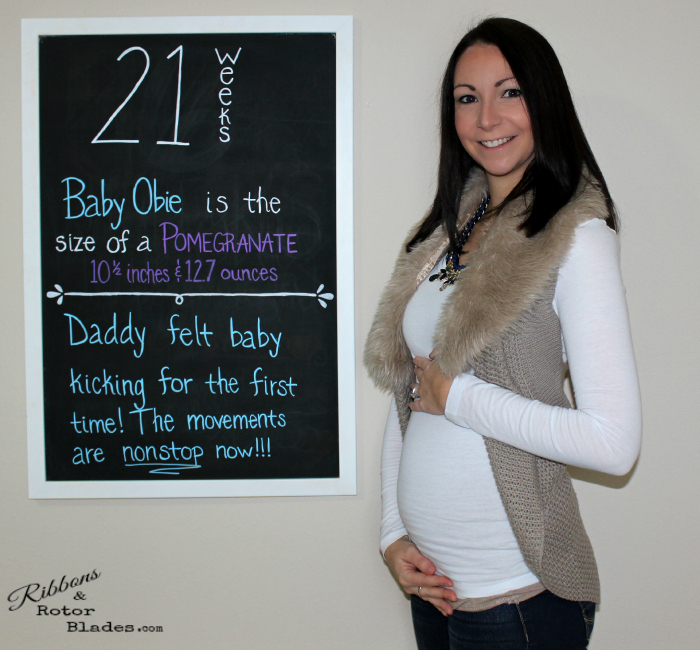
Effect on the cervix
Real labor contractions do have an effect on the cervix opening.
Bleeding/other labor symptoms
If the contractions are accompanied by other labor symptoms, you can consider them to be real.
Persistence
Real contractions persist as the time passes, regardless if you change positions or rest. If your contractions persist regardless of rest, it’s time to grab your newborn essentials and head to the hospital!
How can I tell the difference between true and false labor?
There are a couple of ways to track your contractions and distinguish real from false. Here are a couple of guidelines:
Timing
Are contractions regular and repetitive? Braxton Hicks contractions are random, and you won't notice them repeating after 20 or 15 minutes. However, if the real contractions start, they will most certainly repeat every 15-20 minutes.
Consistency
False contractions will stop if you lie down and get some rest, most often after 20-30 minutes. They will also ease if you empty your bladder and drink some water. Real contractions will progress even if you get some rest.
They will also ease if you empty your bladder and drink some water. Real contractions will progress even if you get some rest.
Low abdomen pain
Real contractions are followed with low abdomen pains, which vary from light, period-like cramping, to severe pain. Braxton Hicks can cause discomfort, especially if you're already feeling pains under your ribs or in your back (which is normal during pregnancy).
Lower back pain
Some women experience sharp, lower back pain during real contractions. If you already suffer from lower back pain, the contraction pains will be distinguishable as they'll feel sharper and more intense.
Duration
Braxton Hicks mainly last shorter than 30 seconds, while real contraction pains extend to 60 seconds or longer. The same goes for the pain sensation, regardless of the pain intensity.
Contraction course
With different levels of sensitivity to pain, and particularly with other typical pregnancy aches, you might be unable to distinguish the real contraction experience. In general, a real contraction will feel like a constant, lasting (60 seconds or longer) pain or pressure that starts either in your lower back (you might not feel this pain) and extend to your abdomen, resulting in low abdomen (pelvic) pressure. Unlike this, a false contraction will be a localized cramping in your upper abdomen lasting anywhere from a couple to 30 seconds.
In general, a real contraction will feel like a constant, lasting (60 seconds or longer) pain or pressure that starts either in your lower back (you might not feel this pain) and extend to your abdomen, resulting in low abdomen (pelvic) pressure. Unlike this, a false contraction will be a localized cramping in your upper abdomen lasting anywhere from a couple to 30 seconds.
When should I call my doctor, doula, birth partner?
If you're full term, your Braxton Hicks will become more frequent and intense. Still, there are a couple of guidelines for distinguishing real contractions from Braxton Hicks.
Although these guidelines are general, every doctor practices their own protocols and tailors them to every individual pregnancy.
For example, if your pregnancy was regular and with no risk factors from the start, your doctor will instruct you differently than if it was a high-risk pregnancy.
Here's when you should grab your hospital bag and go to the doctor:
- Contractions are rhythmic and repeat every 15 minutes.

One of the base differences between real and Braxton Hicks contractions is the pace in which contractions re-occur. Braxton Hicks is random, which means that you can have 2-3 contractions one hour, and then none at all for the rest of the day.
In the case of real contractions, the cramping doesn't stop after 2-3 hours. Instead, it intensifies. If you feel like your contractions are becoming regular or more intense past 2 hours, make sure to get medical help.
- You feel contractions in your lower abdomen. Braxton Hicks is typical to the upper abdomen area (above your hips). Low abdomen contractions, however, are most likely real, especially if accompanied by sharp pain.
- Contractions are painful. Braxton Hicks contractions are rarely painful. When they happen, you'll most likely feel a low-intense pain in your back or upper abdomen. If the contractions you are feeling are painful and focused in your lower abdomen, there's a good chance they're real.
- Presence of other symptoms.
 Nausea, vomiting, increased temperature, and blood pressure – are all signs that you need some sort of medical help. Contractions accompanied with these symptoms don't always have to signal labor, but they do in most cases.
Nausea, vomiting, increased temperature, and blood pressure – are all signs that you need some sort of medical help. Contractions accompanied with these symptoms don't always have to signal labor, but they do in most cases.
Summing up
If you're not yet to go into labor, and you fear to miss the initial signs of a premature labor, your concerns are even greater. On a humorous side, most women realize that the intensity of Braxton Hicks contractions is nowhere near the intensity of real contractions. Rest assured that you will be able to distinguish real from false contractions. If you’re still worried, don’t hesitate to give your midwife or doctor a call and ask any questions.
Braxton-Hicks vs. real contractions: Differences and signs
Real contractions follow a consistent pattern, while Braxton-Hicks contractions vary in duration and frequency. Braxton-Hicks contractions also tend to be less painful and usually only cause discomfort in the front of the abdomen.
Braxton-Hicks contractions simulate real contractions to prepare the body for labor. However, they do not lead to labor. Real contractions only occur when the body is genuinely going into labor.
Recognizing the difference between these types of contraction is important for understanding when labor has begun and when to contact a doctor.
Here, we discuss these types of contraction and how to tell the difference between them.
Contractions occur when the muscles around the uterus tighten and relax. They can occur at any time throughout pregnancy. But “real” contractions only occur when labor is starting.
Real labor contractions can be painful, and the pain tends to intensify. It usually peaks when the muscles tighten and eases when they relax.
The location of the pain varies, but real contractions typically cause a dull ache around the abdomen and lower back. In some women, the pain spreads to the sides and thighs.
Labor typically starts with regular, persistent contractions.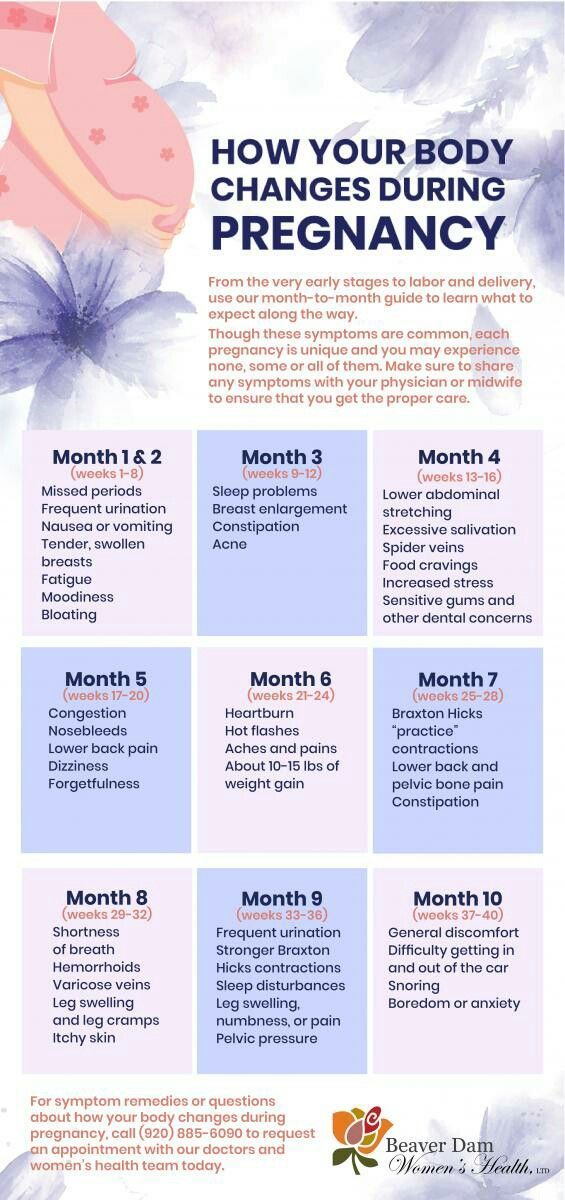 These cause the cervix to expand in preparation for birth.
These cause the cervix to expand in preparation for birth.
Contractions can also occur before labor. These are Braxton-Hicks contractions, sometimes known as prodromal, or false, labor.
These contractions can begin around 6 weeks into gestation, but they are not usually noticeable until the second or third trimester. While the trigger for these contractions is unclear, their function is to prepare the body for labor.
Braxton-Hicks contractions tend to occur sporadically. They vary in frequency, duration, and intensity, but they usually occur more frequently during later stages of pregnancy.
Braxton-Hicks contractions do not cause the cervix to expand and do not lead to birth.
People often mistake Braxton-Hicks contractions for real labor contractions, especially when they occur in later stages of pregnancy. Here are some key differences between the two:
- Consistency: Real contractions last around 30–70 seconds and occur at regular intervals.
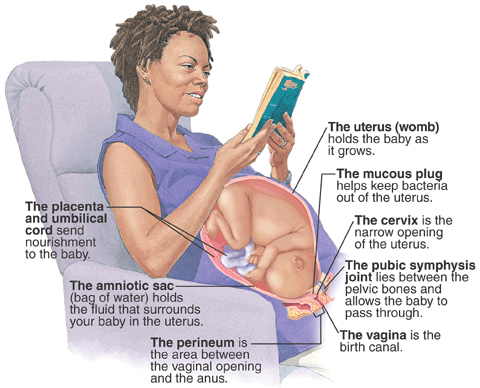 Braxton-Hicks contractions do not follow a consistent pattern.
Braxton-Hicks contractions do not follow a consistent pattern. - Increasing frequency: Real contractions become more frequent as labor approaches. Braxton-Hicks contractions do not increase in frequency.
- Intensity of discomfort: In general, real contractions are more painful than Braxton-Hicks contractions. While they can be uncomfortable, Braxton-Hicks contractions do not typically cause pain.
- Location of discomfort: A woman tends to feel real contractions throughout the abdomen and lower back, and the pain can spread to the legs. Braxton-Hicks contractions usually only cause discomfort in the front of the abdomen.
- Effect of movement: Changing positions or moving in other ways often stops Braxton-Hicks contractions. Movement does not affect real contractions.
Learning to tell the difference between types of contraction can help a person know when to contact a doctor. However, consult a doctor if there is any uncertainty.
Real contractions are a sign that labor is beginning, and contacting a doctor is essential.
Contractions are likely to be real if they occur in a regular pattern and gradually increase in frequency. Real contractions also tend to become painful, and the pain often spreads across the abdomen and lower back.
Other signs that labor is starting include:
- vaginal bleeding that is a bright red color
- the water breaking
In the buildup to labor, the baby may move down toward the cervix. This can happen from a few weeks to a few hours before labor.
Another sign is an increase in vaginal discharge, which can occur days before labor.
If regular, painful contractions occur before the third trimester, it is important to contact a doctor. This could be a sign of preterm birth.
Real contractions are a sign of labor. Braxton-Hicks contractions are not, and they do not lead to birth.
Real contractions are generally more intense and follow a consistent pattern, while Braxton-Hicks contractions do not.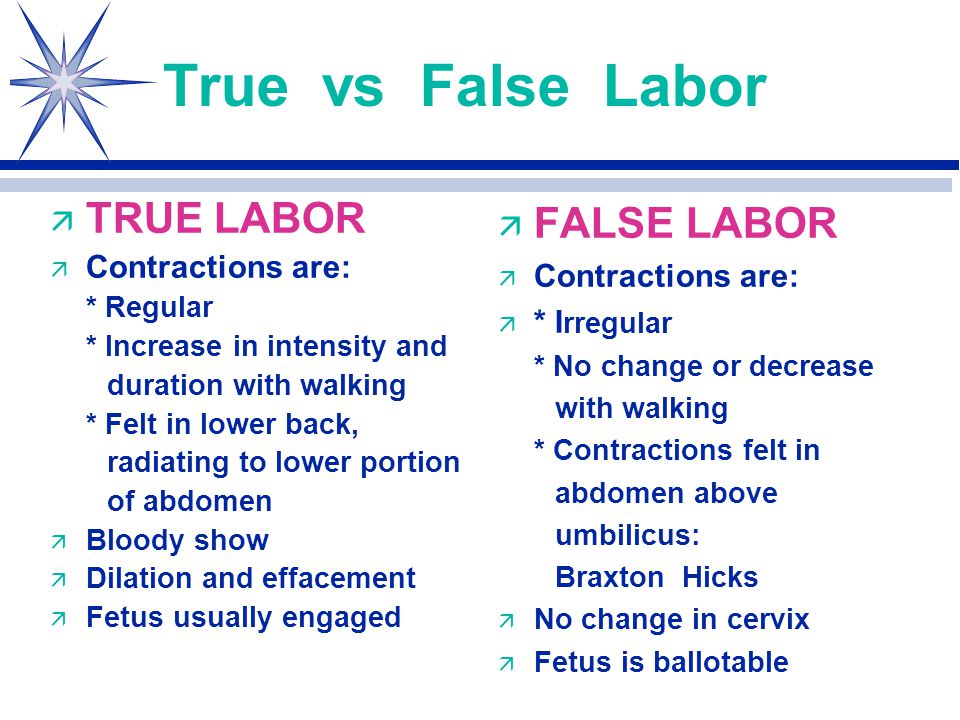 A woman usually feels pain from real contractions around the abdomen, lower back, and sometimes in the legs.
A woman usually feels pain from real contractions around the abdomen, lower back, and sometimes in the legs.
Recognizing other signs of labor, such as the water breaking, can be helpful in understanding the difference between types of contraction. It is important to contact a doctor if signs of labor occur or if there is any uncertainty.
false or real / “Waiting for a baby”
February
Shortly before the birth, the expectant mother may be disturbed by training contractions, rhythmic contractions of the uterus, which quickly pass and appear occasionally. How to distinguish them from real contractions, and why they are needed, we will try to find out.
For the first time, the phenomenon of temporary contractions was described by the English doctor John Braxton Hicks. That is why they are called - Braxton Hicks contractions or false, training contractions, precursor contractions. In his scientific work of 1872, he argued that these contractions are short-term (from half a minute to 2 minutes) contractions of the muscles of the uterus, which are felt by a pregnant woman as an increase in the tone of the uterus. They appear after the 20th week of pregnancy. And during the day they happen often, but the expectant mother in the daytime may not even notice them. However, as time goes on, they intensify, becoming more and more obvious.
They appear after the 20th week of pregnancy. And during the day they happen often, but the expectant mother in the daytime may not even notice them. However, as time goes on, they intensify, becoming more and more obvious.
WHAT DO YOU NEED FALSE BROUGHT
The uterus is a muscular organ. And like any muscle that has to perform the work allotted to it in the body, it needs training. After all, if she hangs for all forty weeks like a bag, she will not cope with the load in childbirth. Thus, the purpose of training or false contractions is to prepare the uterus and cervix for childbirth. That is why one of the names of training bouts is contractions harbingers - harbingers of an approaching birth.
ARE FALSE PARTS PAINFUL?
As a rule, false contractions are painless, but with increasing duration they become more noticeable and bring more discomfort. However, in all women, they manifest themselves in different ways, someone does not feel them at all, and someone does not sleep at night, tossing and turning and trying to find a comfortable position for sleeping. It all depends on the pain threshold. The main thing in this situation is to stop being nervous about this and calm yourself with the thought that such training is necessary for the most important upcoming event - the birth of your crumbs. And to calm down a little and sleep better, ask your doctor to prescribe a sedative for you and get a special pillow for expectant and nursing mothers. With her, falling asleep and experiencing the discomfort of the last weeks of pregnancy will be much easier!
It all depends on the pain threshold. The main thing in this situation is to stop being nervous about this and calm yourself with the thought that such training is necessary for the most important upcoming event - the birth of your crumbs. And to calm down a little and sleep better, ask your doctor to prescribe a sedative for you and get a special pillow for expectant and nursing mothers. With her, falling asleep and experiencing the discomfort of the last weeks of pregnancy will be much easier!
HOW TO LIVE WITH FREQUENT PARTS
Some expectant mothers complain that their Braxton Hicks contractions are frequent and cause significant discomfort, even when they are doing housework or other light physical activity. In such a situation, obstetricians are advised to lie down or vice versa, take an easy walk, in any case, change the type of activity. If training contractions bother you a lot, it is recommended to drink a glass of water, juice or herbal tea, calm down and get some rest. Ask someone close to give you a massage. Lie in silence. And to also benefit from training fights, try doing breathing exercises: practice breathing techniques in childbirth in practice.
Ask someone close to give you a massage. Lie in silence. And to also benefit from training fights, try doing breathing exercises: practice breathing techniques in childbirth in practice.
HOW TO DIFFERENTIATE TRAINING FROM LIVING
The most important thing to understand is that real contractions are much more painful than Braxton Hicks contractions. You will understand it right away. In addition, the contractions that bring you closer to childbirth are more regular. The contractions begin in the lower back, spread to the front of the abdomen, and occur every 10 minutes (or more than 5 contractions per hour). Then they occur with an interval of about 30-70 seconds and over time the intervals between them are reduced. Some women describe the sensations of labor pains as severe menstrual cramps, or sensations during diarrhea, when the pain rolls in waves in the abdomen. These contractions, unlike false ones, continue even after a change in position and when walking, constantly intensifying.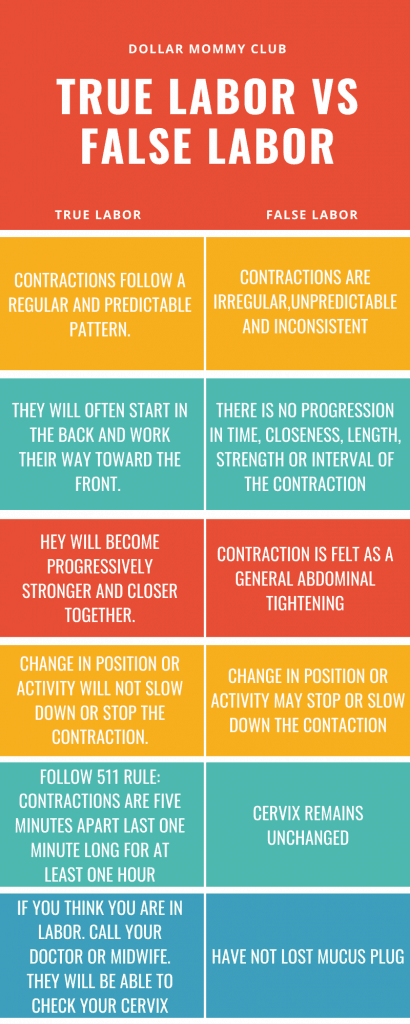 As soon as you feel all these symptoms, call your ob-gyn - hour X has arrived. If in doubt, also do not be afraid to disturb the doctor. The doctor will ask you a few questions that will help him determine the type of contractions and eliminate all your doubts and worries. After all, it is always better to consult a doctor and trust his professional experience.
As soon as you feel all these symptoms, call your ob-gyn - hour X has arrived. If in doubt, also do not be afraid to disturb the doctor. The doctor will ask you a few questions that will help him determine the type of contractions and eliminate all your doubts and worries. After all, it is always better to consult a doctor and trust his professional experience.
You should seek help if:
• you have more than four contractions an hour and they happen regularly
• contractions are accompanied by pain in the lower spine
• contractions are accompanied by watery or bloody vaginal discharge
• the contractions are so strong that it is very difficult for you to endure them
• there is a marked change in the child's movement, or less than 10 movements every 2 hours
• you think your waters have started to break
Alla Misyutina, Consultant Physician, Independent Laboratory INVITRO
Dear women, during labor, the body needs a lot of oxygen, so proper breathing is very important. A large influx of oxygen into the blood of mother and baby alleviates the condition of the crumbs, which during childbirth experiences oxygen starvation. Special breathing techniques help to properly open the birth canal and make contractions and attempts as effective as possible.
A large influx of oxygen into the blood of mother and baby alleviates the condition of the crumbs, which during childbirth experiences oxygen starvation. Special breathing techniques help to properly open the birth canal and make contractions and attempts as effective as possible.
Different types of breathing should be used at different stages of labor.
• During "false" contractions, breathing should be deep and slow. During the period when the contractions become more intense, it is necessary to use "pain-relieving breathing". This breathing is slow, deep, the inhalation is done through the nose, it should be longer than the exhalation through the mouth. More details: inhale is done at the expense of 1-2-3-4, and exhale - at the expense of 1-2-3-4-5-6. With the help of such breathing: mom relaxes, distracts from pain, focuses on the score; the baby receives as much as possible, so he needs oxygen.
• In breaks from contractions, you need to rest and breathe evenly without any effort, so that you can then easily follow the doctor's recommendations.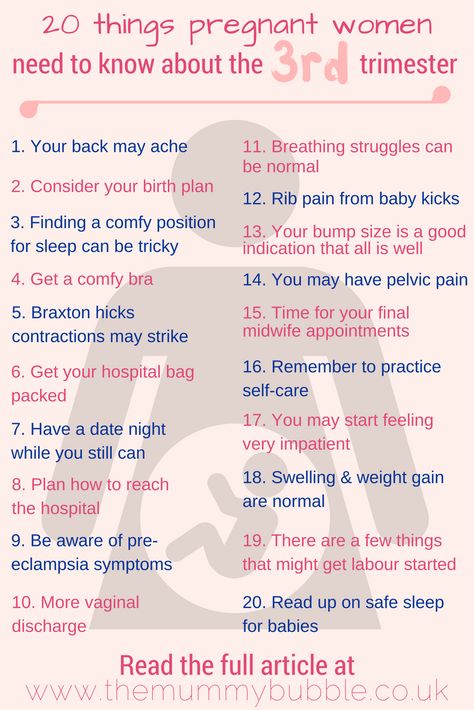
• During attempts, you need to exhale all the air from the lungs, then take a deep breath and push for up to 6-9 seconds. Quickly exhale all the air, quickly take a deep breath and again hold your breath for 6-9 seconds, and so on - about three times per attempt.
• In breaks from attempts to rest and breathe deeply, evenly and relaxed.
• It is very important to only push on the perineum and never push on the head. In this case, all efforts are wasted and will appear in the form of burst vessels in the eyes and on the face.
• In the period after the birth of the head, it is necessary to stop pushing and breathing shallowly, some call this breathing “dog-like”, deep breathing can harm both mom and baby. Then everything goes on as usual, the main thing is to obey the doctor.
• After the baby was born, within half an hour the last stage of labor begins - the birth of the placenta. Special breathing is no longer required, at the doctor's command, push a little into the perineum and EVERYTHING! Dear women, pain during childbirth is good, it means that your baby will be born soon.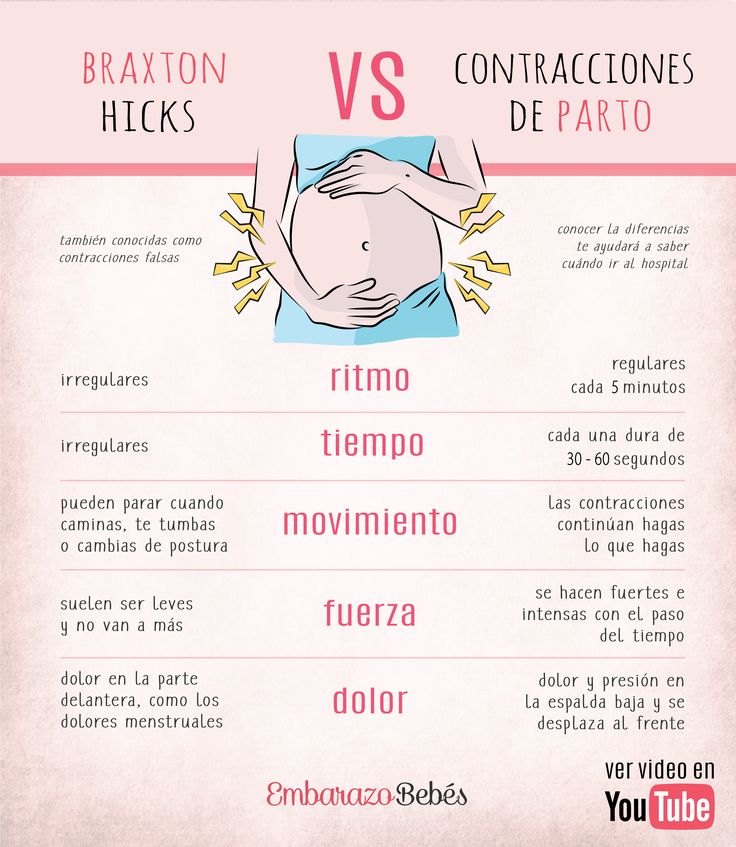 There is no need to resist the pain, this is a mistake that brings a woman and a child nothing but fatigue. On the contrary, it is necessary to concentrate and help in every possible way to give birth to a healthy baby.
There is no need to resist the pain, this is a mistake that brings a woman and a child nothing but fatigue. On the contrary, it is necessary to concentrate and help in every possible way to give birth to a healthy baby.
BIRTH AGAIN
So, you have decided that this is no longer a “teaching”, but the beginning of childbirth. In addition to contractions, the onset of labor can be indicated by the outflow of amniotic fluid and the passage of a mucous plug that closes the lumen of the cervix. The mucous plug can also come off 2-3 days before delivery. However, her departure does not always mean that it is time to go to the hospital. During pregnancy, the cervix is tightly closed. With the onset of labor pains, its opening begins: the cervix of the uterus gradually expands to 10-12 cm in diameter (full disclosure). The birth canal is preparing to "release" the child from the womb. Intrauterine pressure increases during contractions as the uterus shrinks. And in the end, this leads to rupture of the fetal bladder and the outflow of part of the amniotic fluid.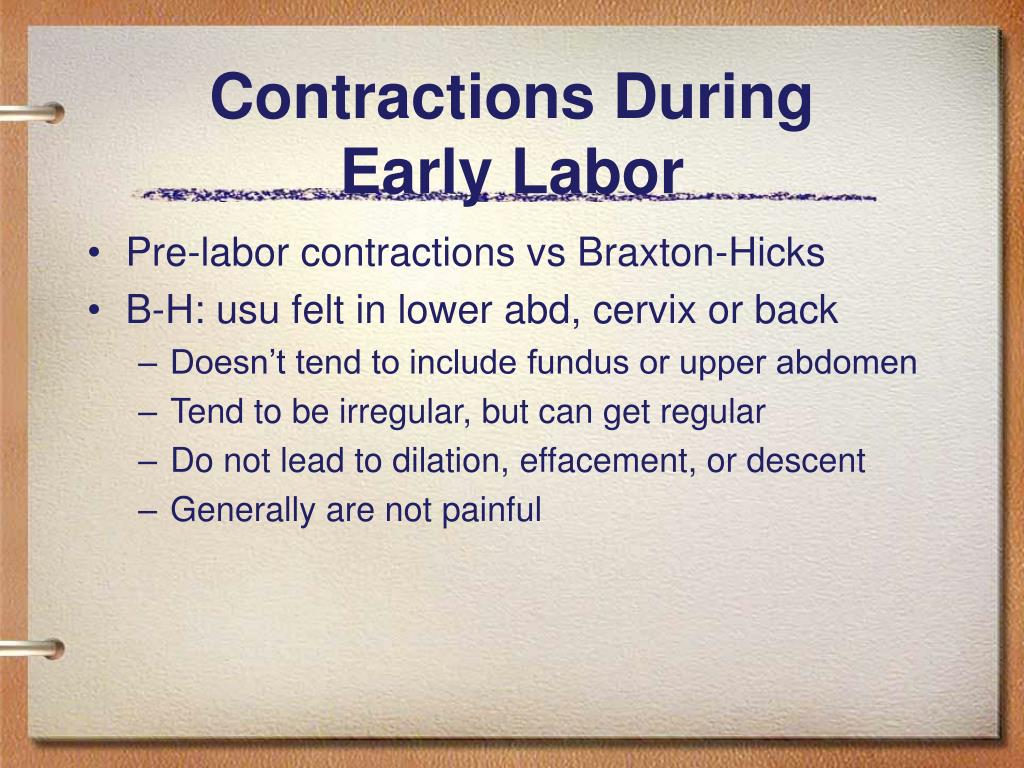
The first, preparatory, period of labor for women giving birth for the first time takes an average of 12 hours, and 2-4 hours less for those who have second births. At the beginning of the second stage of labor, contractions join the contractions - contractions of the muscles of the abdominal wall and diaphragm. In addition to the fact that different muscle groups are involved in contractions and attempts, they have one more important difference: contractions are an involuntary and uncontrollable phenomenon, neither their strength nor frequency depend on the woman in labor, while attempts to a certain extent obey her will , it can delay or strengthen them. Therefore, at this stage of childbirth, a lot depends on the expectant mother and her ability to quickly and correctly follow the commands of the obstetrician taking delivery. And most importantly - to tune in correctly and not allow panic and thoughts about something bad. Obstetricians and gynecologists recommend that mothers perceive childbirth as a holiday, a baby's birthday. Then it will be easier to concentrate on the fact that now your main task is to help the baby be born. If, during childbirth, the expectant mother panics, the concentration of adrenaline in her blood will increase significantly. Which will not have a very good effect on the process of childbirth. Adrenaline affects the synthesis of oxytocin, which significantly weakens contractions and slows down the process of childbirth. In addition, adrenaline completely blocks the production of endorphins, which will increase the feeling of pain during contractions and attempts. That is why it is so important to properly tune in, concentrate and help the baby to be born as soon as possible.
Then it will be easier to concentrate on the fact that now your main task is to help the baby be born. If, during childbirth, the expectant mother panics, the concentration of adrenaline in her blood will increase significantly. Which will not have a very good effect on the process of childbirth. Adrenaline affects the synthesis of oxytocin, which significantly weakens contractions and slows down the process of childbirth. In addition, adrenaline completely blocks the production of endorphins, which will increase the feeling of pain during contractions and attempts. That is why it is so important to properly tune in, concentrate and help the baby to be born as soon as possible.
Lilia Egorova
false or real / “Waiting for a baby”
I confirm More
- Invitro
- About the company
- 2012
- Fights: false or ...
- History
- Quality
- Special ethics
- Innovation policy
- Social liability
- Technological policy
- Equipment
- TREATION TRUGE
- Laboratory complex Invitro
- Medical marketing
- Continuity 9007 9007 9007 900 Back to list
Contractions: false or real / "Waiting for a baby"
February
Shortly before the birth, the expectant mother may be disturbed by training contractions, rhythmic contractions of the uterus, which quickly pass and appear sporadically.
 How to distinguish them from real contractions, and why they are needed, we will try to find out.
How to distinguish them from real contractions, and why they are needed, we will try to find out. For the first time, the phenomenon of temporary contractions was described by the English doctor John Braxton Hicks. That is why they are called - Braxton Hicks contractions or false, training contractions, precursor contractions. In his scientific work of 1872, he argued that these contractions are short-term (from half a minute to 2 minutes) contractions of the muscles of the uterus, which are felt by a pregnant woman as an increase in the tone of the uterus. They appear after the 20th week of pregnancy. And during the day they happen often, but the expectant mother in the daytime may not even notice them. However, as time goes on, they intensify, becoming more and more obvious.
WHAT DO YOU NEED FALSE BROUGHT
The uterus is a muscular organ. And like any muscle that has to perform the work allotted to it in the body, it needs training. After all, if she hangs for all forty weeks like a bag, she will not cope with the load in childbirth.
 Thus, the purpose of training or false contractions is to prepare the uterus and cervix for childbirth. That is why one of the names of training bouts is contractions harbingers - harbingers of an approaching birth.
Thus, the purpose of training or false contractions is to prepare the uterus and cervix for childbirth. That is why one of the names of training bouts is contractions harbingers - harbingers of an approaching birth. ARE FALSE PARTS PAINFUL?
As a rule, false contractions are painless, but with increasing duration they become more noticeable and bring more discomfort. However, in all women, they manifest themselves in different ways, someone does not feel them at all, and someone does not sleep at night, tossing and turning and trying to find a comfortable position for sleeping. It all depends on the pain threshold. The main thing in this situation is to stop being nervous about this and calm yourself with the thought that such training is necessary for the most important upcoming event - the birth of your crumbs. And to calm down a little and sleep better, ask your doctor to prescribe a sedative for you and get a special pillow for expectant and nursing mothers.
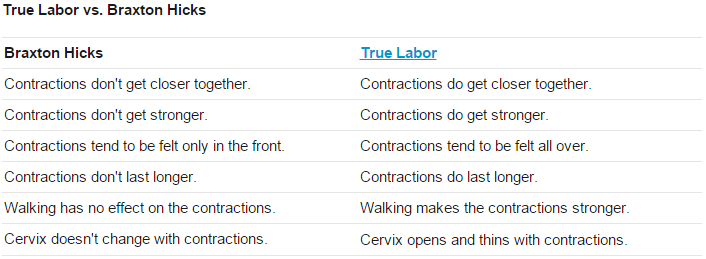 With her, falling asleep and experiencing the discomfort of the last weeks of pregnancy will be much easier!
With her, falling asleep and experiencing the discomfort of the last weeks of pregnancy will be much easier! HOW TO LIVE WITH FREQUENT PARTS
Some expectant mothers complain that their Braxton Hicks contractions are frequent and cause significant discomfort, even when they are doing housework or other light physical activity. In such a situation, obstetricians are advised to lie down or vice versa, take an easy walk, in any case, change the type of activity. If training contractions bother you a lot, it is recommended to drink a glass of water, juice or herbal tea, calm down and get some rest. Ask someone close to give you a massage. Lie in silence. And to also benefit from training fights, try doing breathing exercises: practice breathing techniques in childbirth in practice.
HOW TO DIFFERENTIATE TRAINING FROM LIVING
The most important thing to understand is that real contractions are much more painful than Braxton Hicks contractions.
 You will understand it right away. In addition, the contractions that bring you closer to childbirth are more regular. The contractions begin in the lower back, spread to the front of the abdomen, and occur every 10 minutes (or more than 5 contractions per hour). Then they occur with an interval of about 30-70 seconds and over time the intervals between them are reduced. Some women describe the sensations of labor pains as severe menstrual cramps, or sensations during diarrhea, when the pain rolls in waves in the abdomen. These contractions, unlike false ones, continue even after a change in position and when walking, constantly intensifying. As soon as you feel all these symptoms, call your ob-gyn - hour X has arrived. If in doubt, also do not be afraid to disturb the doctor. The doctor will ask you a few questions that will help him determine the type of contractions and eliminate all your doubts and worries. After all, it is always better to consult a doctor and trust his professional experience.
You will understand it right away. In addition, the contractions that bring you closer to childbirth are more regular. The contractions begin in the lower back, spread to the front of the abdomen, and occur every 10 minutes (or more than 5 contractions per hour). Then they occur with an interval of about 30-70 seconds and over time the intervals between them are reduced. Some women describe the sensations of labor pains as severe menstrual cramps, or sensations during diarrhea, when the pain rolls in waves in the abdomen. These contractions, unlike false ones, continue even after a change in position and when walking, constantly intensifying. As soon as you feel all these symptoms, call your ob-gyn - hour X has arrived. If in doubt, also do not be afraid to disturb the doctor. The doctor will ask you a few questions that will help him determine the type of contractions and eliminate all your doubts and worries. After all, it is always better to consult a doctor and trust his professional experience.
You should seek help if:
• you have more than four contractions an hour and they happen regularly
• contractions are accompanied by pain in the lower spine
• contractions are accompanied by watery or bloody vaginal discharge
• the contractions are so strong that it is very difficult for you to endure them
• there is a marked change in the child's movement, or less than 10 movements every 2 hours
• you think your waters have started to breakAlla Misyutina, Consultant Physician, Independent Laboratory INVITRO
Dear women, during labor, the body needs a lot of oxygen, so proper breathing is very important. A large influx of oxygen into the blood of mother and baby alleviates the condition of the crumbs, which during childbirth experiences oxygen starvation. Special breathing techniques help to properly open the birth canal and make contractions and attempts as effective as possible.
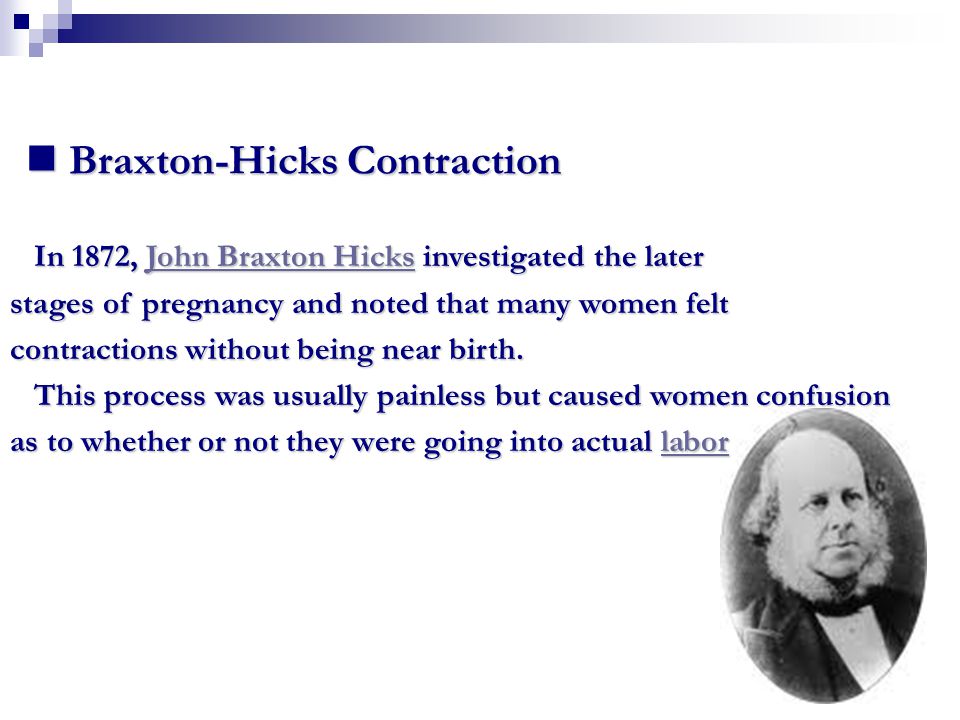
Different types of breathing should be used at different stages of labor.
• During "false" contractions, breathing should be deep and slow. During the period when the contractions become more intense, it is necessary to use "pain-relieving breathing". This breathing is slow, deep, the inhalation is done through the nose, it should be longer than the exhalation through the mouth. More details: inhale is done at the expense of 1-2-3-4, and exhale - at the expense of 1-2-3-4-5-6. With the help of such breathing: mom relaxes, distracts from pain, focuses on the score; the baby receives as much as possible, so he needs oxygen.
• In breaks from contractions, you need to rest and breathe evenly without any effort, so that you can then easily follow the doctor's recommendations.
• During attempts, you need to exhale all the air from the lungs, then take a deep breath and push for up to 6-9 seconds. Quickly exhale all the air, quickly take a deep breath and again hold your breath for 6-9 seconds, and so on - about three times per attempt.
• In breaks from attempts to rest and breathe deeply, evenly and relaxed.
• It is very important to only push on the perineum and never push on the head. In this case, all efforts are wasted and will appear in the form of burst vessels in the eyes and on the face.
• In the period after the birth of the head, it is necessary to stop pushing and breathing shallowly, some call this breathing “dog-like”, deep breathing can harm both mom and baby. Then everything goes on as usual, the main thing is to obey the doctor.
• After the baby was born, within half an hour the last stage of labor begins - the birth of the placenta. Special breathing is no longer required, at the doctor's command, push a little into the perineum and EVERYTHING! Dear women, pain during childbirth is good, it means that your baby will be born soon. There is no need to resist the pain, this is a mistake that brings a woman and a child nothing but fatigue. On the contrary, it is necessary to concentrate and help in every possible way to give birth to a healthy baby.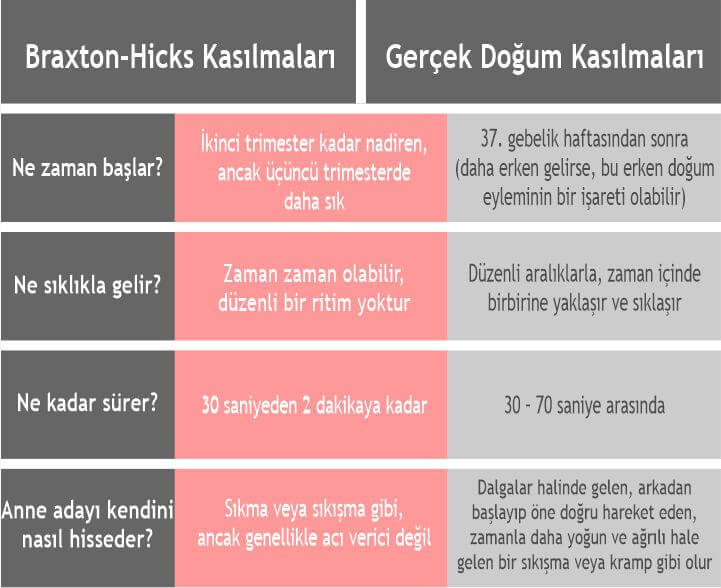
BIRTH AGAIN
So, you have decided that this is no longer a “teaching”, but the beginning of childbirth. In addition to contractions, the onset of labor can be indicated by the outflow of amniotic fluid and the passage of a mucous plug that closes the lumen of the cervix. The mucous plug can also come off 2-3 days before delivery. However, her departure does not always mean that it is time to go to the hospital. During pregnancy, the cervix is tightly closed. With the onset of labor pains, its opening begins: the cervix of the uterus gradually expands to 10-12 cm in diameter (full disclosure). The birth canal is preparing to "release" the child from the womb. Intrauterine pressure increases during contractions as the uterus shrinks. And in the end, this leads to rupture of the fetal bladder and the outflow of part of the amniotic fluid.
The first, preparatory, period of labor for women giving birth for the first time takes an average of 12 hours, and 2-4 hours less for those who have second births.
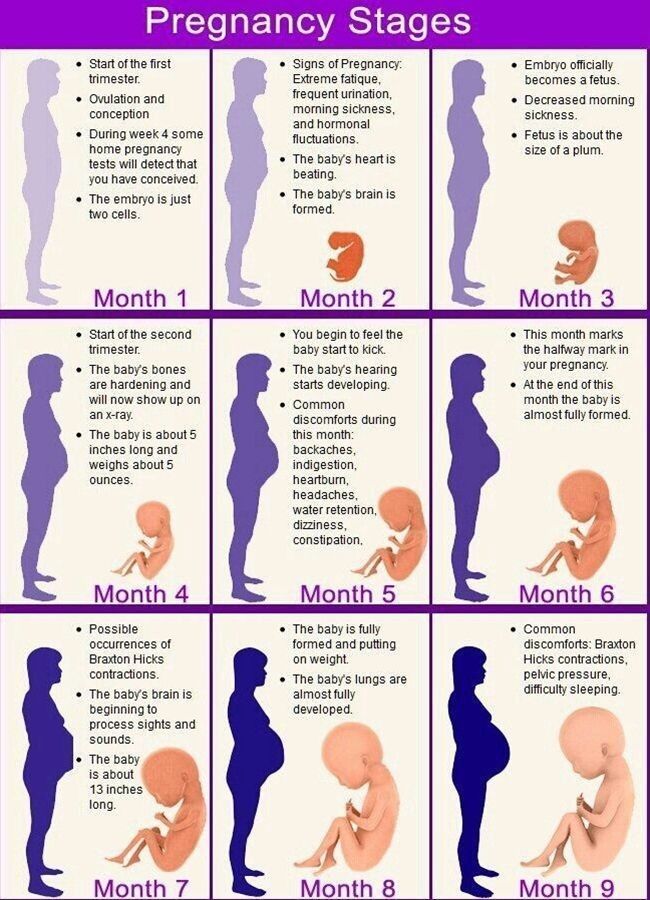 At the beginning of the second stage of labor, contractions join the contractions - contractions of the muscles of the abdominal wall and diaphragm. In addition to the fact that different muscle groups are involved in contractions and attempts, they have one more important difference: contractions are an involuntary and uncontrollable phenomenon, neither their strength nor frequency depend on the woman in labor, while attempts to a certain extent obey her will , it can delay or strengthen them. Therefore, at this stage of childbirth, a lot depends on the expectant mother and her ability to quickly and correctly follow the commands of the obstetrician taking delivery. And most importantly - to tune in correctly and not allow panic and thoughts about something bad. Obstetricians and gynecologists recommend that mothers perceive childbirth as a holiday, a baby's birthday. Then it will be easier to concentrate on the fact that now your main task is to help the baby be born. If, during childbirth, the expectant mother panics, the concentration of adrenaline in her blood will increase significantly.
At the beginning of the second stage of labor, contractions join the contractions - contractions of the muscles of the abdominal wall and diaphragm. In addition to the fact that different muscle groups are involved in contractions and attempts, they have one more important difference: contractions are an involuntary and uncontrollable phenomenon, neither their strength nor frequency depend on the woman in labor, while attempts to a certain extent obey her will , it can delay or strengthen them. Therefore, at this stage of childbirth, a lot depends on the expectant mother and her ability to quickly and correctly follow the commands of the obstetrician taking delivery. And most importantly - to tune in correctly and not allow panic and thoughts about something bad. Obstetricians and gynecologists recommend that mothers perceive childbirth as a holiday, a baby's birthday. Then it will be easier to concentrate on the fact that now your main task is to help the baby be born. If, during childbirth, the expectant mother panics, the concentration of adrenaline in her blood will increase significantly.
